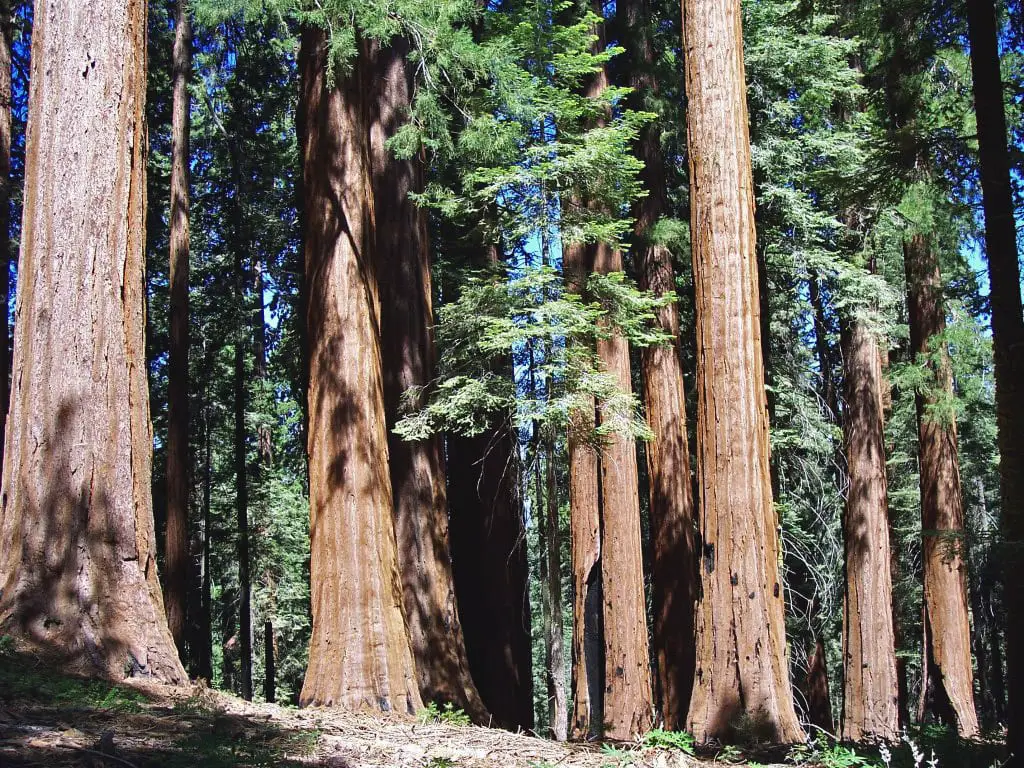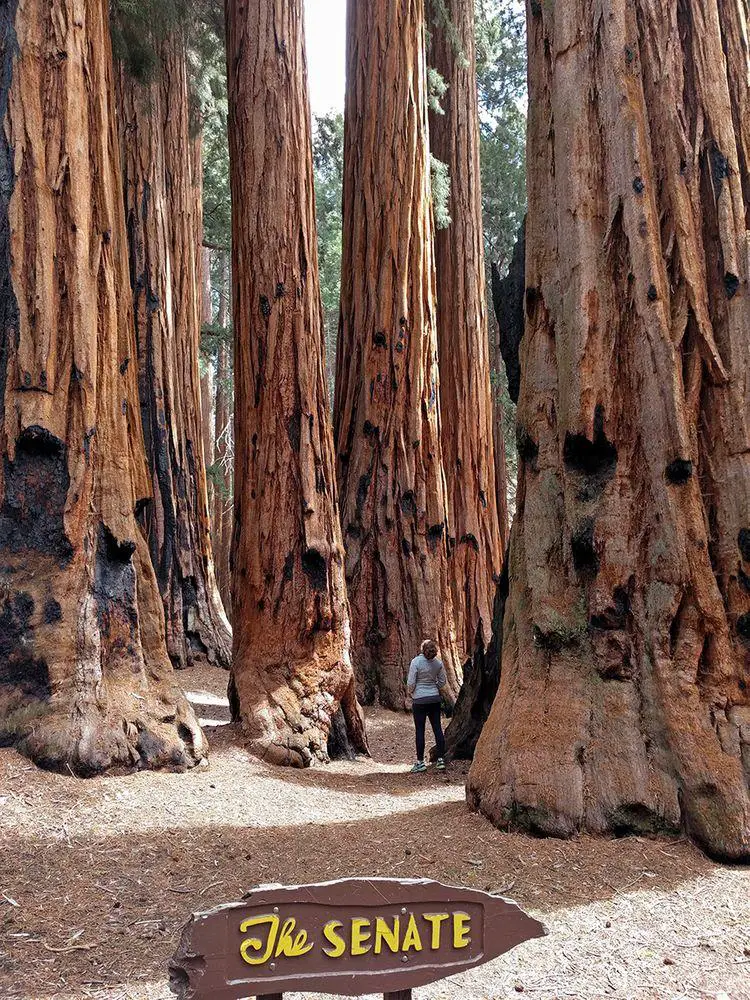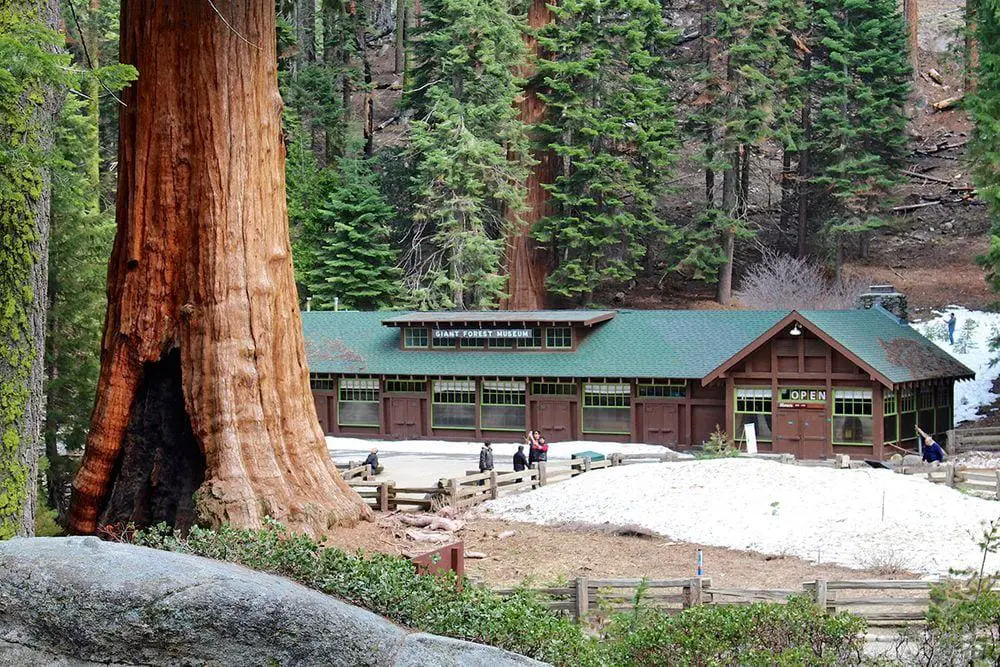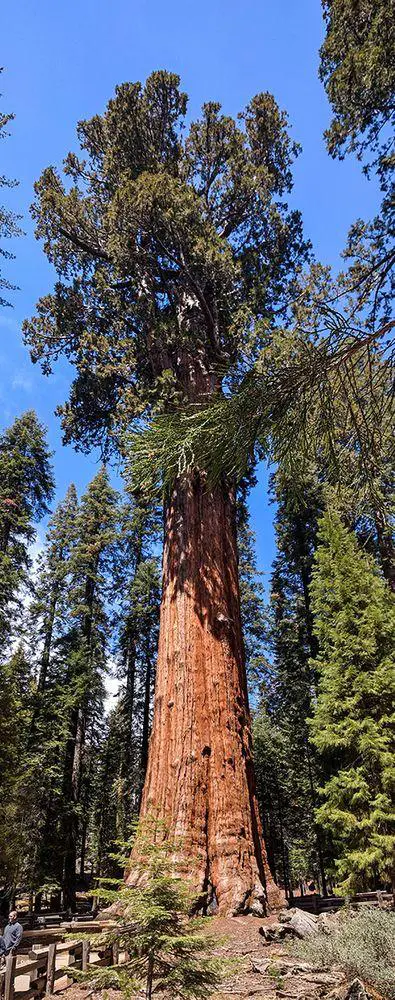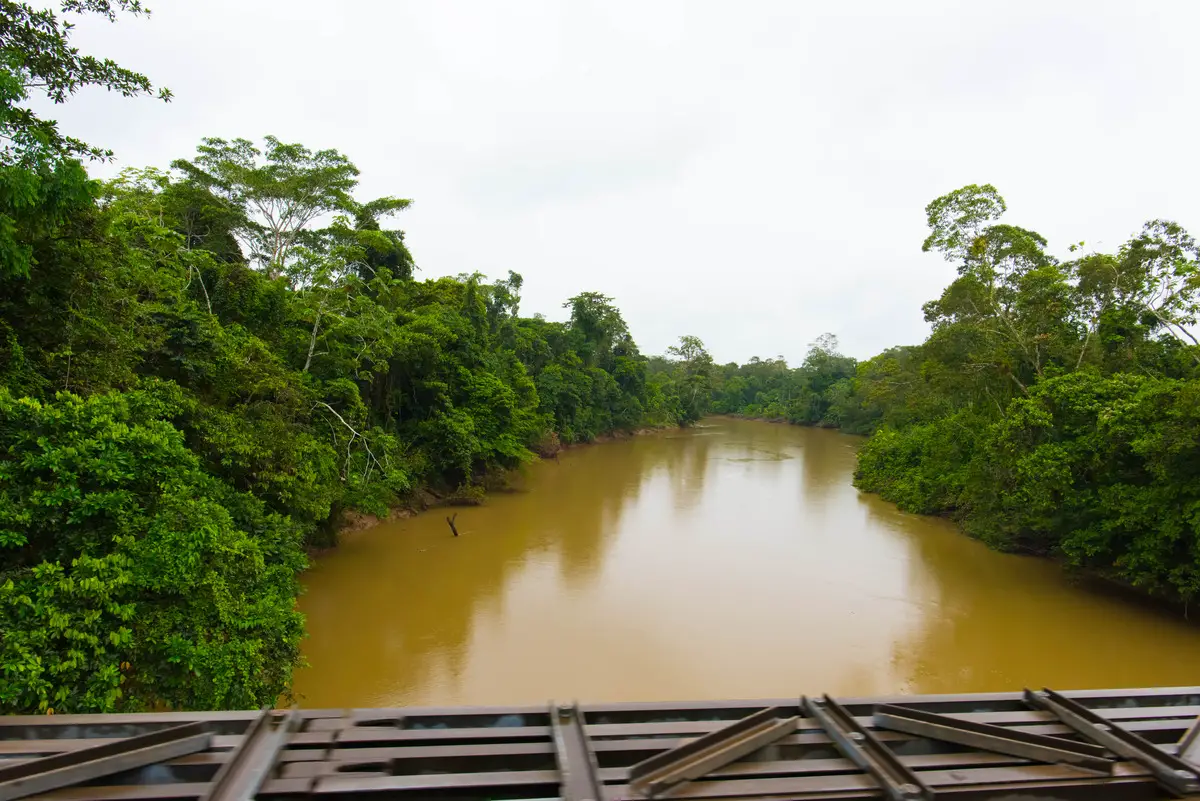Wonder
Giant Forest, California
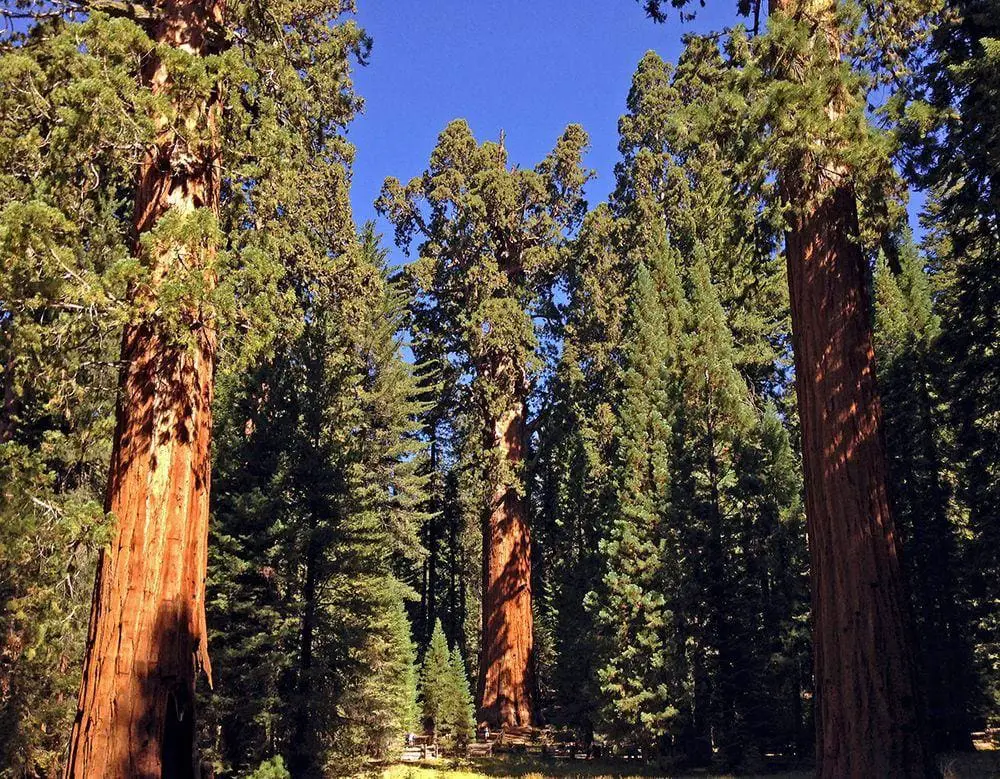
 In short
In short
Western side of Sierra Nevada mountains in California has some of the most unusual ecosystems in the world: forest of giant sequoias – world’ s largest trees. Most prominent of these groves is Giant Forest.
 55.8%
55.8%
GPS coordinates
Location, address
Area
Dominating species
Map of the site
If you see this after your page is loaded completely, leafletJS files are missing.
 In detail
In detail
Sequoia groves
Giant sequoias are not common – in fact these highly unusual trees grow only in 68 groves with a total area of 144.16 km², and there is a concern that in the future number of these trees will decrease even with all the protection measures.
It is assessed that approximately one-fourth of all giant sequoias were lost due to logging in the 19th and early 20th centuries. At the same time, people had such high esteem for these magnificent forests that some of the first modern nature-protected areas were created exactly for the protection of these trees.
Giant sequoias are the biggest trees in the world by trunk volume (1,487 m³), fourth stoutest (General Grant Tree – approximate circumference – 27.8 m) and sixth-tallest in the world (sequoia in Converse Basin – 95.8 m).
Some of the conditions to make the sequoias thrive are moist, wet climates, and scarce undergrowth. The extreme size and height of sequoias have led to several specific adaptations in these plants: for example, they obtain the necessary moisture not only from the roots in the ground but also from the air roots.
Natural removal of the unneeded undergrowth though can not be managed by sequoias themselves. Here comes into action another factor: fire.
Supported by the fire
Over the last century the analysis of the tree rings has helped to explore the history of the local climate. Thanks to the extreme age of the trees (some live up to 3,200 years) it goes far into the past.
This research shows that on a regular basis the forest has experienced fires – larger forest fires take place here every 6 – 35 years (3). Sequoias are protected – at least – partly – from the fire by their thick bark – thus the fire eliminates other plants and does not reach the crown of the giant trees.
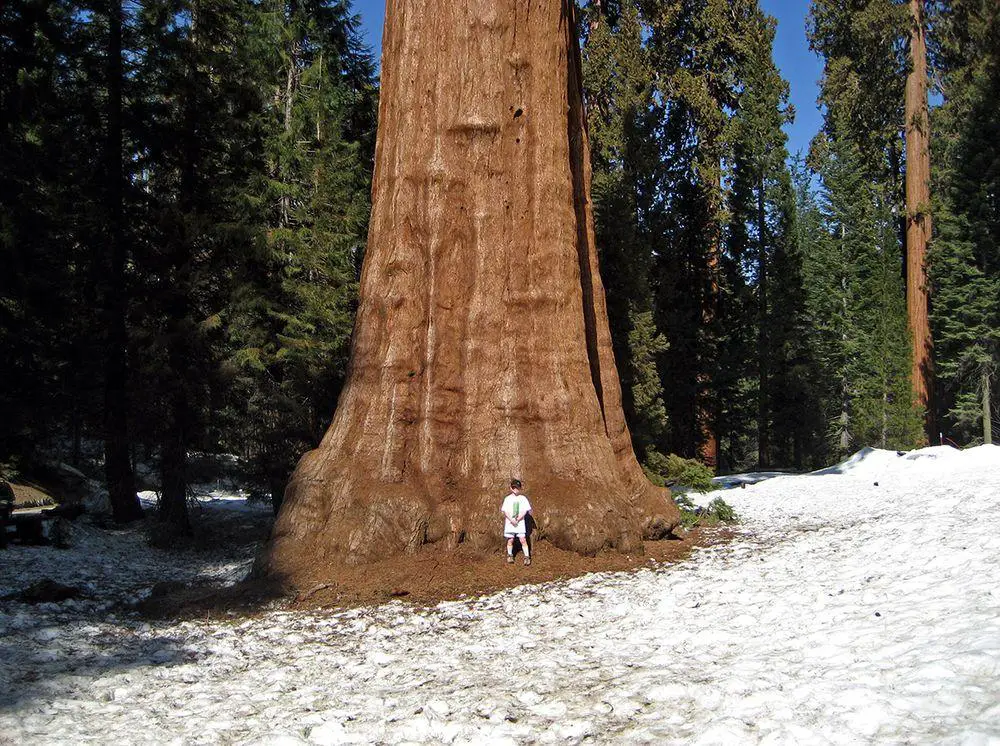
In order to maintain the ecological balance in the forest the national park organizes prescribed burning in the Giant Forest and other groves of giant sequoia. It was started in the 1960ies causing much controversy among general people who could not imagine that fire in the forest could bring any good. And, to be frank: the fire in the forest cannot be controlled completely – it happens that it kills also some sequoias and other large trees. But nevertheless, it helps to maintain the ecosystem.
The most impressive forest
Out of the 68 groves of sequoias the most prominent one is Giant Forest. There over an area of 7.6 km² grow some 8,000 sequoias and five of these trees belong in the list of the top 10 world’s largest trees including the largest (officially announced) one in the world – a tree named General Sherman. There are reported larger trees in California but these are not announced to the public.
These are only figures and facts. Words can not transmit the feelings created by this forest. If one manages to come here outside the tourist season and walk in solitude – this is an unforgettable, elating experience for the whole life.
Giant forest is located some 1,800 m (medium height) above the sea level on the western side of Sierra Nevada – thus, like other groves of sequoia it receives much rainfall and fog from the Pacific. It helps not only sequoias – but also mosquitoes are thriving here and are the most faithful followers to the visitors through the forest.
Tourist destination
Giant Forest is one of the most accessible sequoia groves with good roads leading to it – this, naturally, is a tourist magnet.
As one arrives in the park from the west, already the car park at the entrance in the park is overshadowed by giant trees of unseen size. Many trees have their own names and a dense network of trails (total length – 464 km) leads to diverse tree giants and impressive clusters of sequoias.
History
Before the Europeans there were living Mono people (Potwisha and Wuksachi groups) and Yokuts – some of these people even stayed in the forest for longer time periods.
First person of European descent to see this forest was Hale Dixon Tharp who was led to this site by local people in 1858. The life of this logger and cattle rancher since then was closely linked to this gorgeous forest – up to this day tourists are visiting his lodges.
In 1875 the forest was visited by the great naturalist John Muir who gave the forest its name – Giant Forest.
Fate of Giant Forest Village
In September 1890 there was founded Sequoia National Park which included also the Giant Forest.
As time went on, the popularity of the forest increased. As mass tourism developed during the second half of the 20th century, the pressure on the unique ecosystem increased. Thus it was decided to remove the village and preclude the possibility of tourists staying here overnight.
In earlier times this area was more densely populated – in the forest were scattered some 300 buildings – historical lodging and camping facilities. These buildings from the first half of the 20th century had certain historical value – the Giant Forest Village (Giant Forest Lodge Historic District) was a listed property.
Now only four buildings remain in the area of Giant Forest. Most of the other structures in the 1980ies – 1990ies were relocated to a newly created village – Wuksachi Village where tourists can stay also overnight. The area of the former village was restored to nearly natural conditions.
Prominent locations
Trees
Of course, the most impressive feature of Giant Forest is the giant sequoia trees. Some of the trees are especially large and interesting:
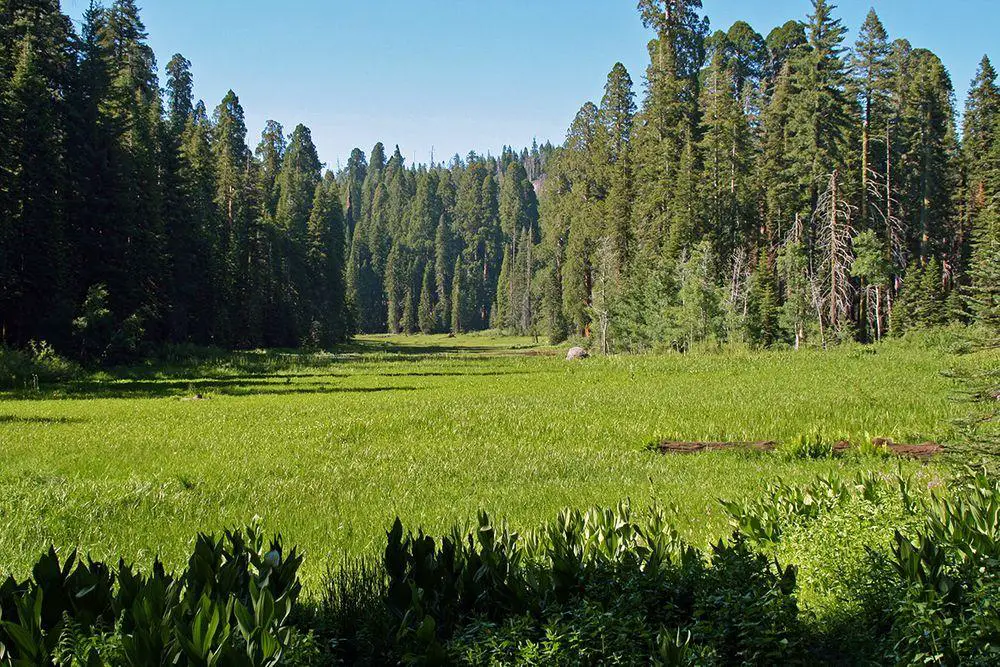
- General Sherman – the largest tree in the world with a volume of 1,487 m³. The tree is 83.8 m high and at the breast height, its circumference is 24.1 m. (1)
- President – third (or – possibly, second) largest tree in the world. This tree is named after president Warren G. Harding. The height of the tree is 74.7 m and the circumference at the height of 1.37 m is 24.5 m. The total volume of this tree is 1,278 m³, and it might be older than General Sherman. (2)
- Lincoln – fourth largest tree in the world, 80.0 m tall. It has a volume of 1,259 m³.
- Franklin – eighth largest sequoia (and tree) in the world with a volume of 1,169 m³. It is named after Benjamin Franklin. This tree is 68.3 m tall. In spite of its immense size, it does not excel visually because it is located in a group of similar-sized trees around it.
- Monroe – tenth largest tree in the world by volume (1,136 m³), 75.5 m tall.
- Washington – formerly this was the second largest tree in the world (its volume was 1,355 m³) but it has collapsed and now there is "only" 35 m tall stump with some living branches.
- John Adams – 1,103 m³ large tree, 76.4 m tall.
- Column – 1,056 m³ large tree, 74.3 m tall. This tree is located near General Pershing.
- General Pershing – 1,015 m³ large tree, 75 m tall.
- Chief Sequoyah – located close to President. This giant tree has a circumference of 27.6 m and is 69.6 m tall, it has a volume of 951.7 m³.
- Hamilton – volume 928.3 m³, height 72.7 m. The tree is named after politician Alexander Hamilton.
- Cleveland – volume 887.3 m³, height 76.5 m. This tree is named after Grover Cleveland.
Other notable sites
- The Senate and The House – spectacular groups of giant sequoias. One feels like an ant between these trees.
- Crescent Meadow – small meadow surrounded by the giant sequoias. This is considered to be one of the most beautiful sites in Sierra Nevada.
- Round Meadow – another beautiful meadow that is surrounded by the wall of these otherworldy tree giants.
- Tunnel Log – fallen, 83.8 m long log of sequoia. In 1938 there was made a tunnel through – smaller vehicles can drive under the tree while larger ones can bypass it.
- Moro Rock – very impressive granite dome at the southern rim of the forest. It rises 75 m tall above the forest and is an attraction by itself.
- Tharp’s Log – shelter in a hollowed log of sequoia which was made by Hale Tharp around 1861. It has been restored as a tourist attraction.
- Cattle Cabin – one of the few remaining man-made structures in the forest. This simple cabin was built by Hale Tharp in 1890.
- Giant Forest Museum – one of the few structures left in the forest. Museum tells the story of local nature and people. The building was constructed in 1928, and designed by Gilbert Stanley Underwood.
References
- General Sherman, the biggest tree in the world, Monumental Trees. Accessed in the 14th April 2017
- Giant sequoia ‘President’ in the Giant Forest, Monumental Trees. Accessed in the 14th April 2017
- Thomas W. Swetnam, Christopher H. Baisan, Anthony C. Caprio, Peter M. Brown, Ramzi Touchan, R. Scott Anderson, and Douglas J. Hallett. Multi-Millenial Fire History of the Giant Forest, Sequoia National Park, California, USA, Fire Ecology, Vol.5, No.3., 2009. doi: 10.4996/fireecology.0503120.
Giant Forest is included in the following article:
 Linked articles
Linked articles
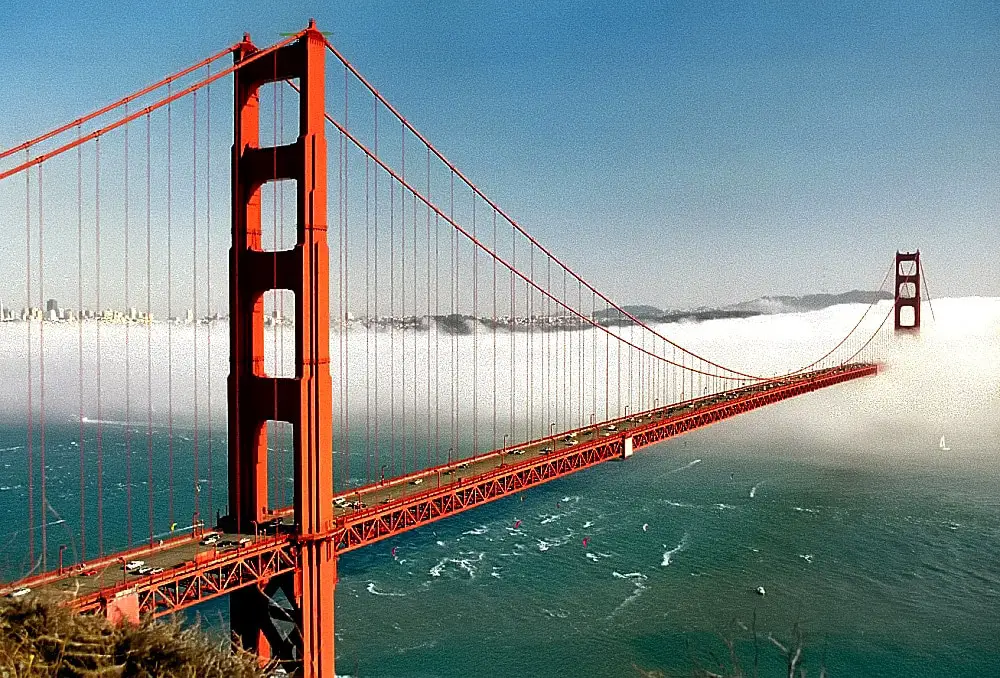
Wonders of California
Although California is one of the states in the United States of America, Americans often compare it to a separate country, e.g. “if California would be a country, it would have the eighth largest economy in the world”. We can go on with this comparison – California has more landmarks and attractions than many large countries of the world.
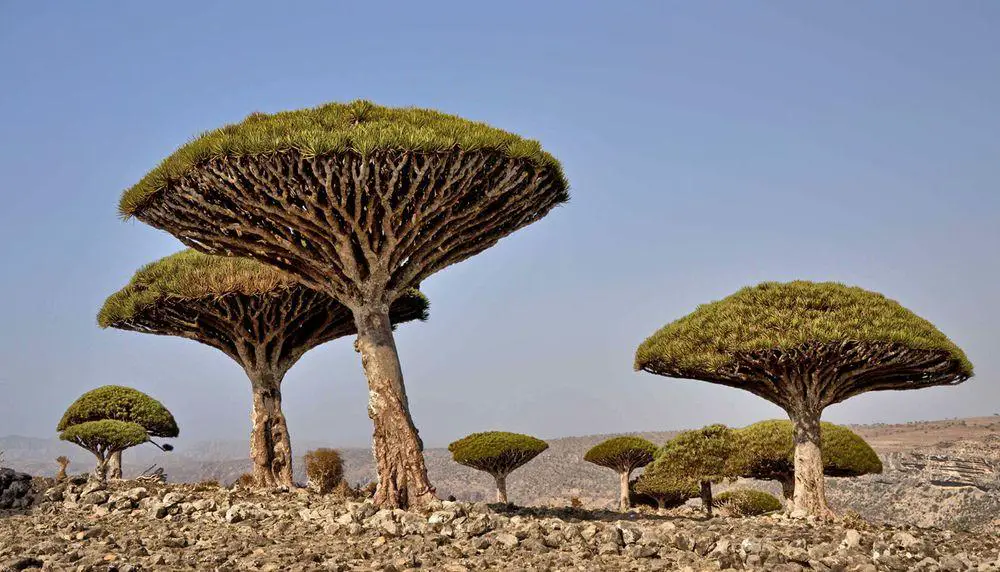
Ecosystems
Biotope is a rather small area with uniform environmental conditions and a specific community of life. Wondermondo describes biotopes and ecosystems which have striking looks, look very beautiful, or have other unusual characteristics.
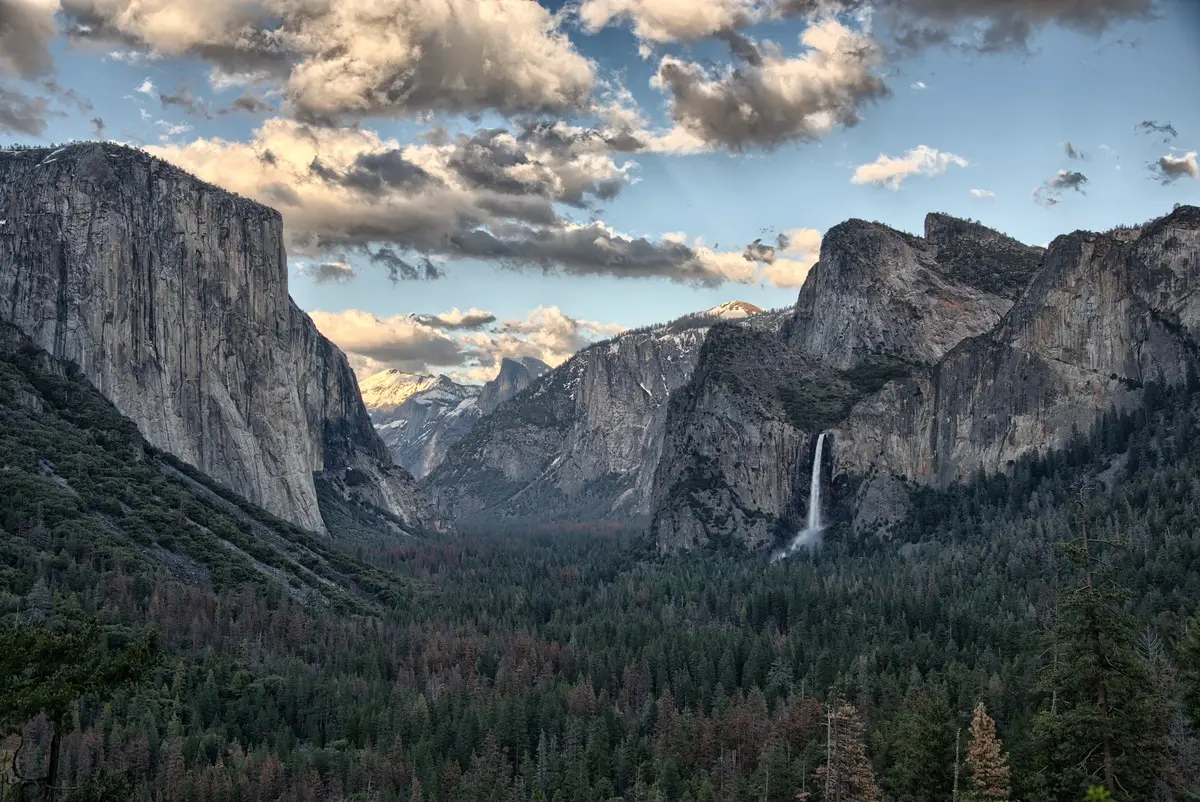
Wonders of the United States
The United States of America is one of the largest countries in the world and offers a wide array of diverse attractions: many are unsurpassed in the world. Highlights of the United States are cliffs, canyons, and rock formations, several impressive downtowns of cities with numerous skyscrapers as well as a rich array of geothermal features, and the giant forest of California.
 Recommended books
Recommended books
Forest Giants of the Pacific Coast
A U. of Washington and Evergreen State College forest ecologist who started the Washington State Big Tree Program explains how trees are measured to qualify for the program, then covers paragons of 20 species of conifers from the General Sherman giant sequoia to the king Engelmann spruce. Includes color photos, distribution maps, a glossary of terms, tree summaries, and a big tree nomination form. Published for the Global Forest Society.
Sequoia: The Heralded Tree In American Art and Culture
In a wide-ranging analysis of the cultural meaning of the California sequoias, Lori Vermaas reveals how Americans have seen nature as an inspiration, a natural resource, and a national treasure. Analyzing a wide range of sources – landscape paintings, stereographs, tourist photographs, advertisements, and art photography – Vermaas traces the transformation in American views of the natural environment from the nineteenth century to today.

